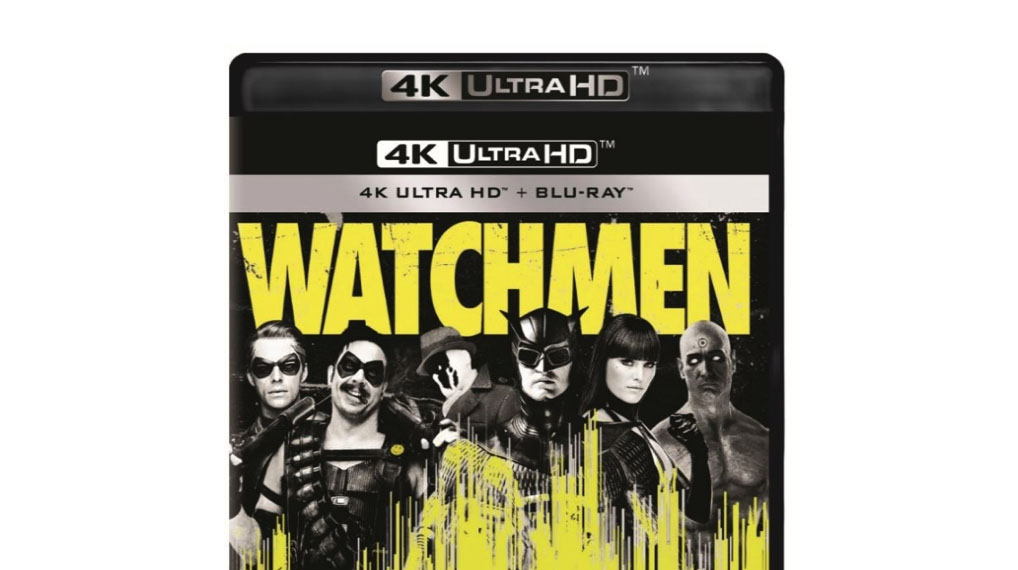TL;DR
Zack Snyder's Watchmen: The Ultimate Cut is a visually stunning, faithful adaptation of the iconic graphic novel, featuring practical sets and a compelling, dark narrative about deconstructed superheroes in an alternate 1985. While the "Ultimate Cut" adds extra footage with an animated interlude that feels tangential, the overall presentation, especially in 4K, is exceptional, with strong character work and a noir aesthetic brought to life by HDR. If you're looking for a mature, complex superhero story that prioritizes visual artistry and thematic depth over typical action fare, this is a must-watch. Dive into this definitive cut to see why it's considered a standout in the genre!
My introduction to director Zack Snyder came with his remake of the zombie classic, Dawn of the Dead. Released in 2004, the film marked Snyder’s directorial debut, following his earlier work directing music videos. Upon revisiting it recently, I observed that the film’s impact has diminished somewhat over time. Nevertheless, the hallmarks of Snyder’s filmmaking – particularly his distinctive musical choices and stylized introductions – are evident even in Dawn of The Dead, and are further refined in Watchmen: The Ultimate Cut.
The story unfolds in an alternate 1985, where President Nixon is poised to be sworn in for a third term, and superheroes are integrated into everyday life. However, these costumed heroes have since been outlawed; intervening in crime while in costume is now considered a crime itself. Consequently, most have retired their superhero personas. The narrative is ignited by the murder of The Comedian (Jeffrey Dean Morgan), a superhero who is thrown from his apartment window, setting in motion a global chain of events with unforeseen and significant repercussions.
Watchmen, like many superhero narratives, originated as a graphic novel, published in twelve issues between 1986 and 1987, authored by Alan Moore and illustrated by Dave Gibbons. The similarities between Watchmen: The Ultimate Cut and Disney’s The Incredibles are notable, likely due to the latter drawing considerable inspiration from the Watchmen graphic novel.
When comparing Zack Snyder’s directorial skill in Watchmen: The Ultimate Cut to his other superhero films, such as Man of Steel, Batman v Superman, and Justice League (where he maintained significant creative control), Watchmen emerges as a superior film in nearly every aspect. It boasts a visually impressive style, and in contrast to the aforementioned films, the sets are largely practical, avoiding excessive reliance on CGI. The production design and costumes convey a sense of weight and authenticity, and the overall quality of the cinematography is exceptional. This success may be attributed to the inherently visual nature of Alan Moore’s and Dave Gibbons’ graphic novel; Snyder’s faithful adaptation of its panels and sequences naturally translated into a compelling film.
The film also benefits from a strong ensemble cast, featuring Malin Åkerman prominently. Another of the film’s strengths lies in its portrayal of flawed and relatable characters, reminiscent of the darkly complex Amazon series, The Boys. My personal favorite is the enigmatic Rorschach, portrayed with chilling precision by Jackie Earle Haley.
Watchmen originally premiered in 2009, and this particular viewing was of the extended “Ultimate Cut,” clocking in at three hours and thirty-five minutes. The theatrical release ran for two hours and thirty-two minutes, followed by a three-hour and six-minute Director’s Cut. This version, therefore, adds a full twenty-nine minutes of footage. However, the added content does not significantly advance the primary narrative. Instead, the additional half-hour comprises an animated interlude: a visual adaptation of a comic book being read by a character within the film. This segment, titled The Black Freighter, features the voice talents of Gerard Butler in the lead role, with Jared Harris also playing a significant part. While visually interesting, this section feels like a digression and doesn’t substantially contribute to the overall plot. Its absence from the Director’s Cut is understandable. While I found the film’s pacing to be engaging enough that the animated sequence didn’t detract significantly, it does momentarily disrupt the main storyline. I would have preferred the option to view the Director’s Cut, omitting this segment.
The Ultra HD edition is a standout among those I’ve reviewed. The visual quality is exceptional, making this “Ultimate” version a joy to behold. The film’s heavy reliance on noir aesthetics, characterized by strong contrasts between light and dark, is perfectly rendered thanks to HDR (High Dynamic Range) technology, ensuring accurate color reproduction. Although the film predates Dolby Atmos, the Dolby True-HD track (an uncompressed format without height channel information) delivers an impactful audio experience. Overall, the presentation provides an immersive and impressive viewing experience. While no supplementary materials are included, likely due to the film’s substantial file size, the inclusion of the Director’s Cut as an alternative would have been appreciated. This could have been achieved through more efficient encoding or by utilizing a second disc for a truly comprehensive “ultimate” edition.
In conclusion, Watchmen is not a film for all viewers. It is unconventional in many respects. However, it stands out as a visually striking and intelligently crafted film with a compelling narrative and a thought-provoking message, making it a worthwhile experience in this definitive form. It comes highly recommended.

